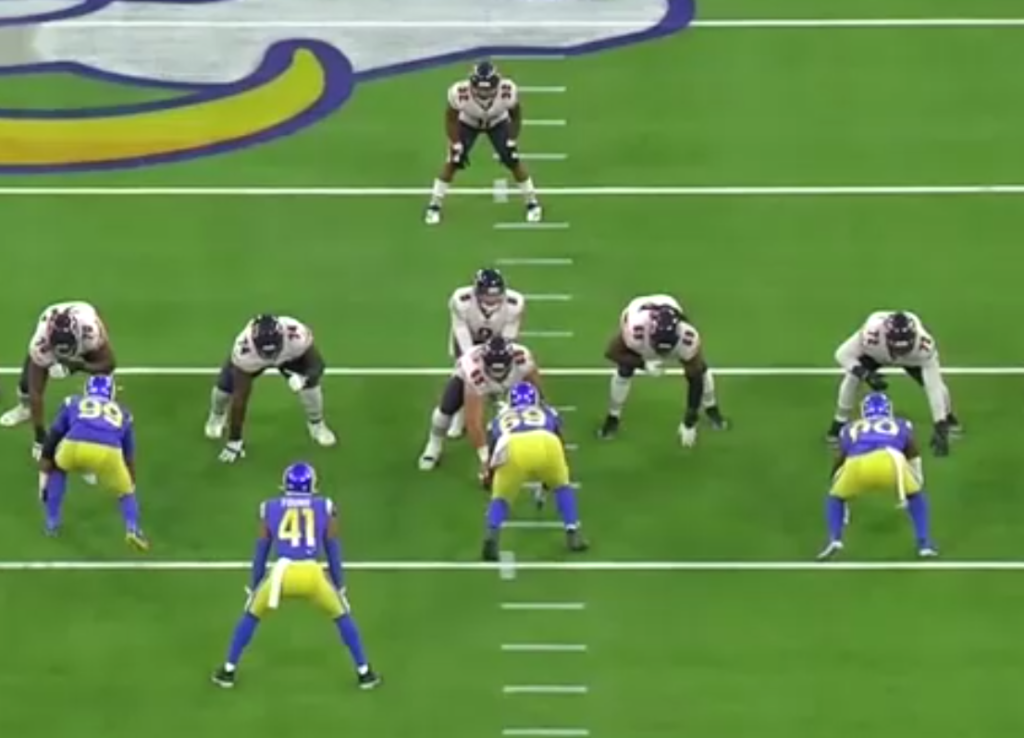
The Eagle front is very similar to the Okie front. The main difference is that all three defensive linemen are now lined up inside the offensive tackles. Typically, the strong outside linebacker is aligned head up on the tight end in 6-technique. The other outside linebacker can play at the line of scrimmage or off the ball. The Eagle front allows the interior three to better occupy all five offensive linemen and force double teams by alignment.

Cover 6
History
Some form of the Eagle or 5-2 defense started in the 1940s and 50s and evolved from there into the more conventional 4-3 defenses we see more commonly now.
The Eagle front, unlike the Okie, is a one-gap system with the Sam linebacker over the tight end being the only one with two-gap responsibility. The ends align in a 4i, so the Sam linebacker has to control both inside and outside of the tight end.
Due to the alignment of the 4i, it makes it very difficult for the offensive tackle to scrape down and prevent the 4i from chasing pulling guards. The alignment also allows the end to be close enough to occupy the guards.
How to Identify
As described above, the difference between the Eagle front and other 5-2 looks is the placement of ends. To a lesser degree, the alignment of the outside linebackers is also important.
The ends will align in a 4i with the outside linebacker aligned in a 6-technique over any tight end. There is still a zero or shade lined up over the center. Those outside linebackers can also be walked back versus spread teams to help combat the pass while still being able to fill and force the ball back inside.

Strengths of Eagle Front
Ability to chase down pulling linemen
On gap schemes with pulling linemen, the end in 4is key the guards. If those guards leave to pull, they now have access to chase down the play and attack the mesh between the quarterback and the running back. The alignment can make it very tough for tackles to get in front and cut off that 4i player.

Power
Forces double teams and for the offense to bounce plays outside
With the two ends aligned in the B-gap, that forces offenses to either attack the A-gap or bounce the ball outside towards the outside linebackers. The 4i alignment can also isolate the tackles on the ends on zone scheme plays. When the guards attempt to leave for the second level, that gives the end access to a one-on-one with the tackle with inside leverage to disrupt blocking schemes. If the guard stays with the tackle on a double team, that frees up the linebackers to scrape and fill.
Dragon Concept
Weaknesses of Eagle Front
Lack of edge rush
With only three down defensive linemen and a two-gapping player over the tight end that will also have pass coverage responsibility, that leaves the defense with three rushers on five blockers in passing situations. Defenses will send the Sam lined up over the tight end, but that takes a special player that is able to pass rush and run defend as they are responsible for two-gapping the C/D-gap.
Forces zone coverage
When dropping into coverage, the Will now has pass responsibility which leaves the weakside C-gap open. In man coverage, both the outside linebackers would be in man coverage while also being responsible for a gap. It’s not a recipe for success to have two separate players in run/pass conflict on either side of the field.
Summary
The Eagle front is great for occupying offensive linemen. It forces double teams and works well against gap scheme runs. While it has some limitations in pass rush and coverage, there are ways to work around it and maintain the integrity of the defense. The Eagle front is becoming more and more popular at all levels.




